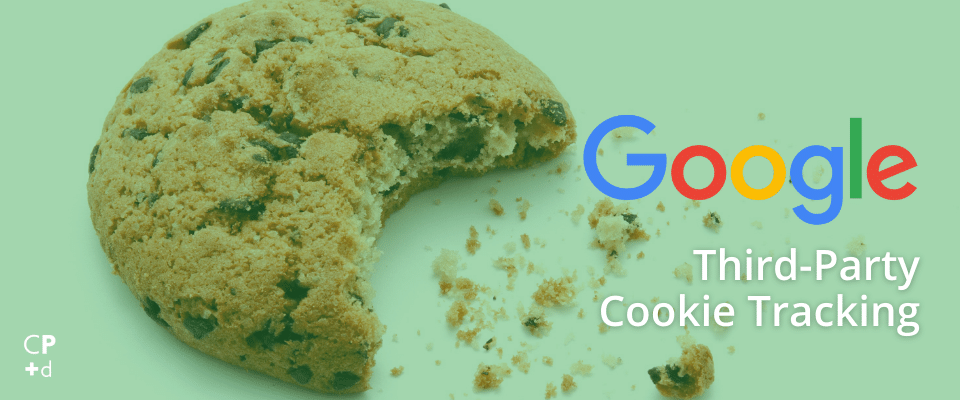2024 Digital Marketing Trends to Watch
Somehow yesterday was New Year’s Day of 2019, and yet 2023 is less than 50 days away, and all we did was blink. It can’t just be us who feel that way, right?!
We’re being proactive and looking ahead at what the new year has in the digital marketing realm, and to be frank, there is a lot to prepare for. We’ve compiled several 2023 digital marketing trends to watch out for, marked by changes from Google, hyper-targeted content marketing, and evolving social media usage.
Without our marketing lens on, it’s clear to see that there are some cultural shifts taking place. A recent report on consumer trends by GWI revealed that people are feeling the effects of the bleakness of reality. With a looming recession, continued climate change concerns, and political divisiveness across the country, consumers want content that takes them out of reality. Romance and fantasy genres are increasing in popularity along with a desire to interact with online games and simulations using a creative avatar.
The people simply do not want to see more bad news, and marketers have to adjust their 2023 strategies to reflect more desirable content. But that’s not all. Continued changes from Google’s terms and tools, along with changing trends in search and platform usage, will require an overhaul of some brand’s generated content buckets and distribution strategies.
Read on for everything you need to prepare for digital marketing in 2023 – it will be here before you know it!
Adapt or Die: Adjusting to Google’s Changes in 2023
Maybe it isn’t that dire, but Google is making a lot of changes to the way marketers track data and advertise on its platform, and to stay up to date, we must adapt our strategies.
The New Generation of Analytics: Google Analytics 4 (GA4)
On July 1, 2023, Google’s Universal Analytics (the Google Analytics that you may have become comfortable using since it was created in 2005) will stop processing new hits. Google is replacing Universal Analytics with Google Analytics 4 (GA4), a new generation of website measurement tools.
Migrating from Universal Analytics to GA4 is mandatory, and the earlier you choose to make the transition, the more historical data and insights you can glean from the new platform. GA4 will have some of the same reporting capabilities as Universal Analytics but with improved machine learning features, actionable reporting, and new integrations to help with adapting to new privacy requirements.
Changes with Chrome Extensions May Mean More Ads
Google is changing the development build of the Chrome extension platform in 2023, hoping to increase security, privacy, and performance. Manifest Version 3 is the latest iteration of the platform, which gives the browser information about extensions, including the most important files and capabilities the extension may use.
The Google Chrome extensions platform has been around for a decade, but this newest version will mark the most significant changes it has experienced. Chrome will limit the use of externally-built ad blockers and instead implement a built-in solution that is more basic in scope and execution than the dynamic ad-blocking extensions that currently exist.
This 2023 digital marketing trend is being contested by web developers and privacy experts who say Google could accomplish increased security with better policing of the extension store and is only attempting to protect its business model (ad revenue) by creating this change. We don’t know the full impact this change will have for users, but marketers could see an increase in the reach and visibility of their Google ad campaigns in 2023 once Manifest V3 is implemented, as early as June 2023. Conversely, organic search listings may get pushed down on the page.
Be a Smart Cookie: Google’s Third-Party Cookie Changes
Google has hinted at changes to third-party cookie tracking for some time now. The Privacy Sandbox is Google’s community initiative to create web tech that protects users’ privacy and gives companies tools for conducting digital business.
The current plan is to stop the use of third-party cookies in Chrome by early 2024. Like with the transition from expanded text ads to responsive search ads (RSAs), the other browsers (Yahoo, Microsoft) will likely follow suit soon after Google implements this change.
For marketers, this will limit what data can be tracked from user data and may affect the effectiveness of retargeting campaigns. The good news is that this transition will be gradual. Google is currently testing new ways to deliver targeted advertising in place of third-party cookies, and the timeline for full implementation has already been pushed back twice.
Shifting From Direct Response Marketing to Brand Marketing
For years, marketers have touted being ‘data-driven’ because it appeals to C-level decision-makers and earns budget allocation. But things are changing in 2023, and it’s time we leave vanity metrics in the past.
Vanity metrics are elements of data reporting that really only provide “fluff.” For example, 612 likes on an Instagram post that led to 0 conversions. That 612 number may look impressive, but without any leads, it doesn’t mean much. The metrics that matter in 2023 are those that relate to the bottom line and are actionable, even if they aren’t objectively measurable.
We’re at a turning point in digital marketing, in terms of how we promote our brand and how we measure success. Conversion attribution is becoming harder by the day, and is forcing us to chart a new course to keep our marketing effective. We’re getting back to basics – brand marketing – and while it can be a bit jarring for marketers who became most comfortable with the “data-driven” hat on, it’s also refreshing. This should be seen as an exciting time to get more creative with our marketing and truly bolster our branding.
– Alexa Parker, Founder & CEO, Crimson Park Digital
So how do we react to this 2023 digital marketing trend and move away from tracking vanity metrics? The answer lies in shifting from a direct response marketing perspective to a brand marketing perspective.
Direct-Response Marketing vs. Brand Marketing
Direct-response marketing involves advertising with the intent of receiving immediate action from prospective customers. The goal of a direct response approach is to generate a lead–quickly and without complications. Examples of goals include gaining likes, processing sales, and increasing website clicks.
Branding or brand marketing is a more all-encompassing form of advertising. Branding goals usually include an increase in brand awareness, which may not result in an immediate conversion, but can create continued customer loyalty and interaction. Branding goals can be related to social media, website design, public relations, and customer service outreach. Eventually, brand marketing can lead to conversions in a more sustainable way than direct-response marketing.
Changes in cookie tracking and a collective move away from vanity metrics have contributed to the shift from direct-response marketing to brand-focused marketing. In 2023, we expect to see more PPC, influencer marketing, social media, and content campaigns focused on brand awareness.
Evolving Trends in Search Behavior
Google’s increasing changes may seem intimidating for marketers who have yet to dive into Google’s PPC advertising tools, and to them, we would say: don’t worry, there are other options. A digital marketing trend for 2023 that we’re already seeing is that online users are increasingly turning to platforms other than Google to conduct product research and information inquiries. Marketers have the potential to unlock this advertising potential by keeping a close pulse.
We did a deep dive into how generations are using search differently, which revealed the different platforms and content types users of varying ages are interested in. As marketers, we must take note of these differences and apply them to better target our desired audience(s).
Pinterest, TikTok, and Reddit all provide alternatives for advertising outside of classic search engines. Consumers are getting savvy with how they seek out information, and marketers can capitalize on this trend in 2023. We can do this by distributing content that informs or educates by anticipating our customers’ problems and providing answers to their questions.
Influencer marketing can give brands a boost with this strategy by creating and distributing content to an audience who is receptive to their messaging. Brands should identify influencers in their industry, or with relevance to their product, and develop influencer marketing campaigns that will lead to increased brand awareness and conversions.
Influencer marketing spending is projected to grow by 23% in 2023, amounting to over $7 billion annually.
The Uncertainty of Twitter
We recently touted the advertising potential of Twitter. But over the last few weeks, this OG of the social media sphere has been going through it. This is proof of how quickly things change – for better or worse – in digital marketing.
Since Elon Musk officially took over Twitter in early November, the platform has seen a “massive” drop in revenue, a significant loss in advertising dollars, and an inordinate amount of layoffs. Musk himself (yes, the real Elon Musk, not someone pretending to be him with a paid-for verified account – a whole other saga) has Tweeted that the company is losing over $4 million a day.
Executives have begun vacating their C-level positions, and internal emails are being leaked, which reveal legal anxieties for the employees who remain. Twitter users are dropping out in troves, migrating to alternatives such as Mastodon, Clubhouse, LinkedIn, and even the once-forgotten platform Tumblr.
We can’t say for sure what the future of Twitter and its advertising platform looks like, or even could look like, for marketers. What we do know is that Musk is desperate for brands to continue advertising on the platform after many have paused ads.
When mapping out your 2023 marketing plan and distribution channels, consider your target audience. If Twitter is the main way you reach your customers, do they fall into the bucket of users who are abandoning the platform? If so, it may be time to pivot. For all others, removing Twitter as a line item on your 2023 marketing budget may not be the worst idea.
Need help keeping up with these 2023 digital marketing trends? Contact us today for a free 30-minute consultation!
Frequently Asked Questions
What is the main difference between Universal Analytics and GA4?
Google is phasing out Universal Analytics and replacing it with Google Analytics 4 beginning in mid-2023. GA4 places more focus on events and parameter metrics whereas Universal Analytics was focused on sessions and pageviews.
How is cookie tracking changing in 2023?
Google has announced that Chrome will stop the use of third-party cookies by the end of 2023. After this change takes place, website visitors will need to consent to any kind of data being stored. This will affect marketers by changing how much data is tracked from website users, and by limiting retargeting strategies.
What does it mean to allow cookie tracking?
When you see a pop-up on a website asking you to “allow cookies,” you are agreeing to have your personal user data be used for targeted marketing efforts. Website cookies track different types of user data which is limited by laws and regulations.





